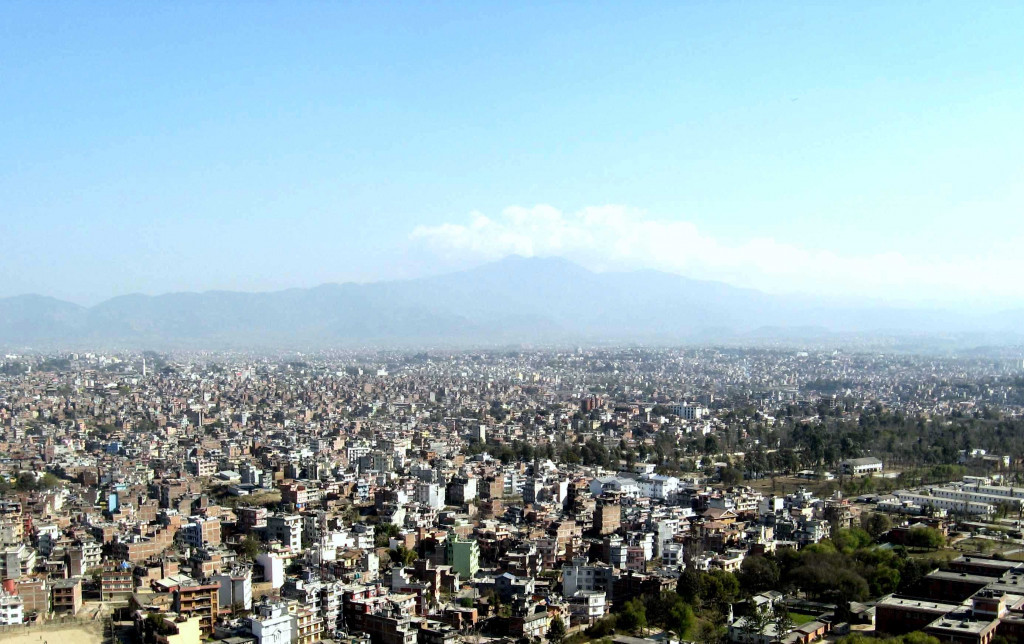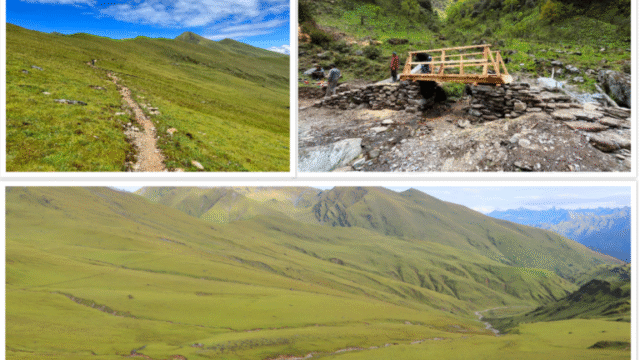The Department of Hydrology and Meteorology (DHM), through its Meteorological Forecasting Division, has confirmed that the monsoon wind is currently active throughout Nepal, with the monsoon low-pressure trough lying close to its average position. This atmospheric setup has led to widespread changes in weather conditions across the country, signaling a full onset of the monsoon season.
Monsoon System Covers Entire Country
The monsoon trough, which generally influences Nepal’s summer weather patterns, is presently aligned near its average location over the southern plains. As a result, monsoon wind systems are influencing weather from the eastern hills to the far western region. According to the Division, this has created favorable conditions for cloud formation, rainfall, and thunderstorm activities in various parts of the country.
The widespread influence of monsoon winds has led to mostly cloudy skies over Nepal. From the lowland Terai to the elevated hill belts and mountainous regions, clouds have blanketed much of the country since early morning. The Division forecasts this trend to continue throughout the day and into the night in most hilly regions.
Widespread Rainfall Predicted
Meteorologists have warned of light to moderate rainfall occurring in many areas today, especially across the hilly regions of Koshi, Bagmati, Gandaki, Lumbini, and Sudurpaschim provinces. These areas are particularly vulnerable to monsoon rains due to their geographic location and the orographic lifting of moist air from the plains to the hills.
Scattered rain showers have already been recorded in some districts by mid-morning. The Division further predicts that other provinces, including those in the southern plains and the western highlands, may also experience rainfall, though in fewer locations.
Thunderstorms accompanied by lightning are likely to occur in some regions, particularly in areas where heat buildup has intensified convection. Such weather events, while common during the monsoon season, could pose risks to lives, property, and agricultural activities, particularly if lightning strikes intensify.
Risk of Heavy Rainfall in Select Areas
While light to moderate rainfall remains widespread, the Division has issued a special bulletin noting the possibility of heavy rainfall in isolated areas within Koshi, Bagmati, Gandaki, Lumbini, Karnali, and Sudurpaschim provinces. Although the number of such areas is expected to be limited to “one or two places” per province, the potential for localized flooding, landslides, and waterlogging remains high, especially in mountainous and sloped regions where the ground has already become saturated.
Authorities have been urged to remain alert, particularly in districts prone to landslides such as Ramechhap, Sindhupalchowk, Lamjung, Parbat, Rolpa, and Baitadi. The Division has recommended that travelers, farmers, and local governments in vulnerable zones monitor weather alerts and take precautionary measures.
Snowfall Expected in High Hills and Mountains
In addition to rain, the Department also forecasts light to moderate snowfall in the high hilly and mountainous regions of the country. While snowfall during monsoon months is relatively rare, it is not entirely unusual in areas above 3,000 meters, particularly if the monsoon moisture interacts with cooler upper-air systems.
Districts like Mustang, Manang, Dolpa, Humla, and parts of Mugu might experience a light dusting of snow in higher elevations, potentially affecting trekkers, pilgrims, and high-altitude farmers. This snowfall, though unlikely to accumulate heavily, serves as a reminder of Nepal’s diverse topography and climate.
Cloudy Night Ahead in Hilly Regions
As evening approaches, the weather pattern is expected to remain unchanged. The Division states that the skies will stay generally cloudy in most hilly areas tonight, with occasional breaks in cloud cover possible in the southern plains and some western areas.
The persistent cloud cover could keep temperatures relatively stable overnight but may lead to higher humidity and discomfort in urban centers. Nighttime rain is also possible, although its intensity is expected to be lower than during the day.
Preparedness and Public Caution Urged
Given the evolving monsoon dynamics, the Meteorological Forecasting Division has advised the general public to stay alert. People living in landslide-prone or flood-prone areas should remain cautious and be prepared to evacuate if necessary. Likewise, agricultural activities such as paddy transplantation could benefit from this rainfall, but farmers are also warned against working in open fields during thunderstorms due to the risk of lightning strikes.
The Department has reiterated that the monsoon will remain active in the coming days, with daily fluctuations in rainfall intensity depending on local topography and atmospheric pressure movements.
Nepal is now under the full grip of the summer monsoon system, with varying intensities of rainfall expected across provinces. The coming days will be critical for disaster preparedness, particularly in vulnerable districts, as the nation navigates one of the most impactful climate cycles of the year.






